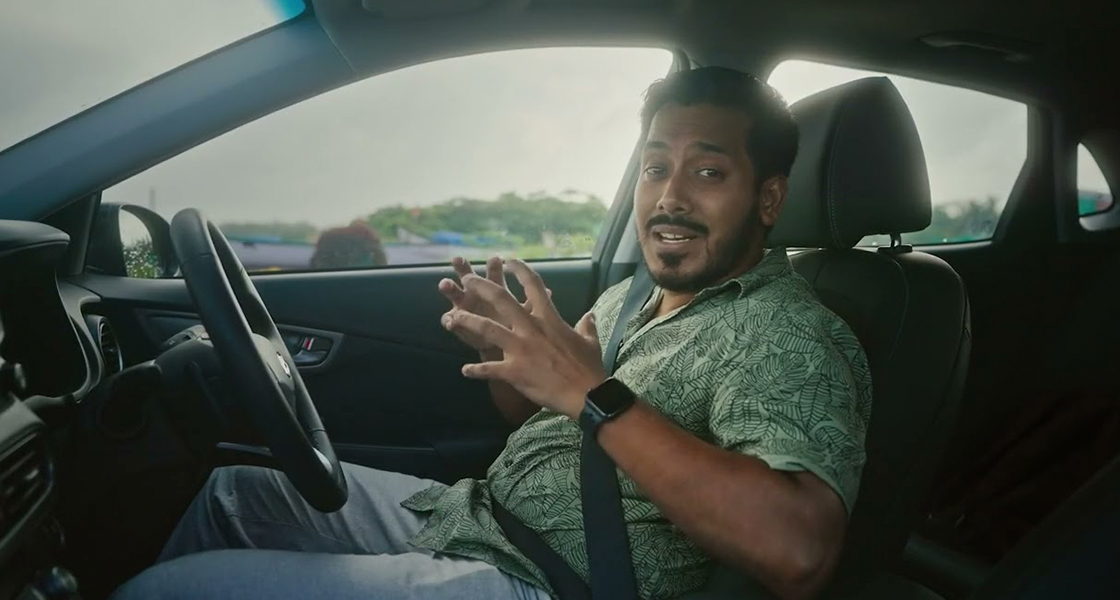Road to sustainability with chef Thomas Zacharias
Chef Thomas Zacharias Trails Food Sustainability In Goa With The Hyundai KONA Electric. With clean eating, seasonal ingredients and food sustainability being the highlights in the culinary space, we discover Goa’s culinary secrets with the Hyundai KONA Electric on the road. Text by Simrran Gill; Photographs by Jagdish Limbachiya
In today’s time, sustainable living is taking front seat in almost every aspect of our lives—be it food, fashion, travel, or our lifestyle in general. Right from the big choices to the small ones, our decisions often involve factors like limited resources and multiple uses.
And keeping in mind the significance of being sustainable in this day and age, Travel + Leisure India & South Asia, in collaboration with Hyundai KONA Electric, brings Road to Sustainability, a three-part sustainable living series with thought leaders from the fields of travel, food, and lifestyle.
Chef Thomas in Goa with the Hyundai KONA Electric.
In Part II, we head to Goa with Chef Thomas Zacharias, to understand sustainability and clean eating better, as we traverse the coastal strip aboard the Hyundai KONA Electric. Although the chef has seen varied views on sustainability, while journeying with us he begins by asking a few poignant questions, “When you say sustainable, the larger question is sustainable for whom? For your carbon footprint or sustainable for the land itself? What about the people who grow our food? Or the kind of packaging that’s used to transport it?”
Chef Thomas believes there are more ways than one to be sustainable.
And while we put our thinking hats on, he says, “Sustainability isn’t black and white or yes and no—it’s a world of grey. It is small decisions taken steadily every single day towards the goal of a greener future. People seem to think that there’s only one set way to be sustainable and green and that is a very one-dimensional way of thinking.”
Food, Coast, and Sustainability
Our country is home to varied landscapes and with changing regions, seasons and topography, these changes affect the crops we grow, the food we eat and the agricultural rotation patterns we follow. But one practice that is common through all of this is sustainability. And Chef Thomas seems to be in agreement.
Chef Thomas has travelled across the country and discovered various ways in which food sustainability can be achieved.
“In my travels across India, I’ve learned that no matter where I go, I find that sustainability is so deeply rooted in our food culture and heritage. Whether it is in how we’ve always been a country that eats locally and seasonally, how we’ve celebrated food forests and multi-cropping on our farmlands, how we utilise every part of the vegetable or meat in our traditional recipes, or how we’re so mindful of waste. There are many different facets of sustainability at its core.”
When it comes to food sustainability, Chef Thomas likes to look at the larger picture, and make the best out of what’s already available. “To me, it’s about keeping the integrity of the ingredients you’re cooking with and using ingredients that are varied in their nature. It’s not just about the same foods that we eat every day but more about the knowledge of the different foods and what exactly it is that they have to offer,” he shares.
Hyundai KONA Electric and Food Sustainability
For Chef Thomas, it’s much more than just exploring and cooking. “I’ve travelled to 23 states to explore food. I’ve met people on my food exploration trips who are trying to preserve the sanctity of local ingredients and celebrate traditional practices rooted in sustainability,” he shares.
And following this motto we reach Hansel Vaz’s farm who taught Chef Thomas that Goa originally had 40 types of rice native to its soil, which over time have been lost. “Hansel grows a type of rice on his farm called Giresal rice. It’s a dark red indigenous crop that is very aromatic. The story is that when you cook it, even your neighbours can smell the rice. Hansel went out of his way to find seeds for Giresal in the hope that he could continue to grow it and celebrate this unique crop,” explains Chef Thomas.
Considered as the ultimate party place and an escape from mundane life, Goa has often been overlooked just as a ‘fun’ destination. Busting this myth about Goa, Chef Thomas says, “People always think of it as a party destination, but Goa has an incredible landscape of beaches and lush green fields, forests and mountains, and long winding roads that allow you to be with yourself, and can actually hear yourself think.”
And talking about how the Hyundai KONA Electric is aiding his journey, he says, “The Hyundai KONA Electric is quieter than my head. It can go 452 km at a stretch in a single charge and you can afford enough time to drive the entire length of this state back and forth a couple of times.”
Fishing in Goa
Our next stop for the day is Miramar Beach to meet Aaron Lobo
“While spending time in Goa, I was able to meet Aaron, who told me about the Ramponker fishing community, who take out their boats about a kilometre into the ocean and fish in a traditional, less invasive manner. This doesn’t destroy everything in its path like large-scale trawler fishing,” shares the chef. “Fishing has always been a community thing, especially in Maharashtra. So keeping that tradition alive, while also staying away from using big machinery keeps the ocean undisturbed. By opting for a more sustainable route, people can have access to fresh fish. Because the truth is that so much of the fish consumed in Goa comes from other states,” he explains further.
Chef Thomas on the Miramar Beach to observe fishing in a less invasive way.
And as we drive to our final destination, Chef Thomas shares how smooth his ride for the day has been. “Lucky for me, the Hyundai KONA Electric has different driving modes. In the Comfort mode the car responds to the lightest touch and the drive alongside these gorgeous views is effortless and smooth,” he smiles.
Before signing off, he shares how sustainability is much more than what meets the eye. “Whether it’s things I do in my personal life like eating locally as much as possible, composting at home, using reusable bottles and cups on my travels across the country, or picking an electric car so as to not create more pollution, or in the ways I highlight stories of other people and organisations that are doing incredible work in the sustainable space and give them a voice, I’m trying to take steps to do better and be better. There’s no one single way to do it, you just have to find what works for you. In the larger scheme of things, we never think of food as a domain for sustainability. But it is. Protecting what is already ours and integrating the practices in our current daily lives might just be the answer to our path to sustainability,” he concludes.







